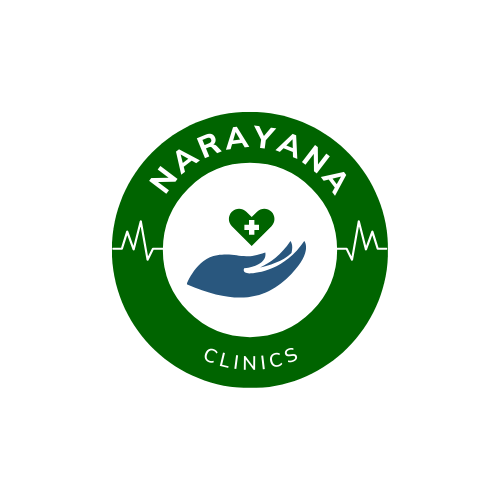Physiotherapy
Physiotherapy is a healthcare profession that focuses on the assessment, diagnosis, and treatment of physical disabilities, movement dysfunction, and pain caused by injury, ageing, or illness. A physiotherapist uses a variety of techniques to help improve a patient’s mobility, strength, and function.

Detailed Procedure of Physiotherapy
Here’s a step-by-step guide to the detailed procedure of physiotherapy:
1. Initial Assessment
The physiotherapy process begins with a detailed evaluation of the patient. This step helps in diagnosing the problem and tailoring a specific treatment plan.
Patient History: A thorough history of the patient’s symptoms, medical history, lifestyle, and goals is taken. The physiotherapist asks about the onset, type, location, duration of pain or discomfort, and any previous treatments.
Physical Examination: The physiotherapist performs a physical assessment, including:
- Posture and Gait Analysis: Examining how the patient stands, walks, and moves.
- Range of Motion (ROM) Testing: Measuring joint mobility.
- Muscle Strength Testing: Assessing muscle strength and tone.
- Palpation: Checking for tenderness or tightness in muscles or joints.
- Functional Tests: Tests that simulate activities of daily living (e.g., lifting arms, bending) to assess specific limitations.
Diagnosis: Based on the assessment, the physiotherapist diagnoses the condition and discusses it with the patient, outlining the factors causing pain or dysfunction.
2. Goal Setting
Short-term Goals: These are immediate goals aimed at reducing pain, inflammation, or swelling and restoring some movement.
Long-term Goals: These goals focus on full recovery, improving strength, mobility, and preventing future injuries. Goals are often personalized to the patient’s daily needs (e.g., return to sports or work activities).
3. Treatment Planning
A tailored treatment plan is designed based on the diagnosis and the patient’s goals. This plan typically includes various modalities, exercises, and manual techniques.
4. Treatment Techniques
Physiotherapy incorporates a wide range of techniques based on the individual’s condition. These are usually combined for maximum benefit.
a) Manual Therapy
- Soft Tissue Mobilization: Massage and other techniques to relax tight muscles, reduce swelling, and improve circulation.
- Joint Mobilization: Hands-on techniques to improve joint function and range of motion by applying pressure to the joints.
- Manipulation: A more forceful technique used on specific joints to reduce stiffness and improve function (typically used for the spine).
b) Therapeutic Exercises
- Range of Motion Exercises: Exercises aimed at restoring normal joint and muscle mobility.
- Strengthening Exercises: Resistance exercises using weights, bands, or body weight to build strength in weakened areas.
- Balance and Coordination Exercises: Training to improve stability and coordination, often after injury or surgery.
- Stretching: To enhance flexibility and prevent muscle tightness.
c) Electrotherapy Modalities
- Transcutaneous Electrical Nerve Stimulation (TENS): Uses electrical currents to reduce pain.
- Ultrasound Therapy: Deep heat therapy using sound waves to treat soft tissue injuries and promote healing.
- Interferential Therapy (IFT): Another form of electrical stimulation that penetrates deep tissue for pain relief.
d) Heat and Cold Therapy
- Cryotherapy (Cold Therapy): Helps reduce swelling, inflammation, and pain.
- Thermotherapy (Heat Therapy): Improves blood flow and flexibility in tight or stiff muscles.
e) Hydrotherapy
- Water-Based Therapy: Performed in a pool where the buoyancy of water supports the body, reducing the weight placed on the joints during exercise. This is particularly useful for arthritis and post-surgery patients.
f) Assistive Devices and Bracing
- Splints, Braces, and Taping: These devices may be used to support and protect injured areas during recovery.
5. Patient Education
- Self-Management: Patients are taught exercises they can perform at home to maintain progress.
- Postural Education: Advice on maintaining good posture and body mechanics during daily activities, work, or sports.
- Lifestyle Modification: Tips to prevent further injury, manage chronic conditions (e.g., arthritis), or optimize recovery (e.g., weight management, ergonomics).
6. Progress Evaluation and Adjustment
- Regular Monitoring: The physiotherapist regularly evaluates the patient’s progress and updates the treatment plan based on the improvements seen.
- Exercise Progression: Exercises are gradually advanced as the patient improves in strength, flexibility, and endurance.
7. Discharge and Long-Term Plan
- Criteria for Discharge: The patient is discharged once they meet their goals or are functional in their daily activities with minimal discomfort.
- Home Exercise Program: A long-term exercise plan is provided to maintain improvements and prevent recurrence of the injury.
- Follow-Up Visits: In some cases, follow-up appointments are recommended to ensure that the patient continues to progress independently.

